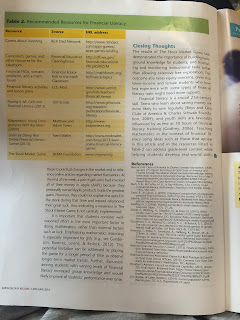Before this course, I overlooked the importance of reading in a math course. When I read the course description on the bulletin I thought to myself,
it is not my job to teach kids to read, that is what English teachers are for. And while it is not going to be my job, as a math teacher, to teach my students HOW to read, it is going to be my job to facilitate good reading skills and strategies as they pertain to my math class. When a student of mine cannot read the word problems on a test, their inability to read
WILL totally be my problem. I remember on the first day of class when we read the statistics about illiteracy in the United States; chances are, I will have a good number of students who will struggle with reading in my class, and in their other classes too. Struggling readers will also struggle with math content that they will not be able to read and comprehend-- directly impacting their performance in math.
 |
| Think Aloud/ Thinking Out Loud pun |
 |
| Shocking, but makes total sense! |
Perhaps one of the most important things I have taken away from the semester comes from the "Think Aloud" reading strategy. Just like how in my math class I will demonstrate how to solve one variable equations step-by-step in great detail and explaining why I am doing each step, I will need to demonstrate how to read math problems in the same detail in order to help my students succeed in Math. It is not common sense; you read math differently than you read a novel, and differently than you read a primary document in Social Studies. Demonstrating what good reading (in a math context) looks like is just as important as teaching the math content. Saying things like "
when I read this problem, I notice that XYZ..." or "
So I am going to underline that part, because I think I will need to use that later in the problem..." is helping my students see how I, as the teacher, read math problems and what is going through my head when I am solving them.
As someone who has never been a big reader, I sympathize with the students who do not want to read more than they have to in order to pass the reading quiz. However, throughout the course I have come across some really interesting texts that would be relevant to my middle school math class. I have collected texts (for my text set and past synthesis blogs) that are relevant to the middle school math curriculum, but that are not Math textbooks. For many of the assignments that required us to collected a text relevant to our content area, I have come across texts that are aimed at developing financial literacy skills in young adults/teenagers... this has really sparked my interest! It is way easier than I had originally thought to include a variety of texts into a math class. Providing a
Business Insider article and asking math related questions based on the numbers from the article, for example, would be a cool way of straying from the math textbook every now and then. These outside readings will not replace textbooks, but they are a rich supplement to textbooks that are fairly easy to come across.
While there have been some topics in the textbook and covered in class that I do not necessarily see myself including in my classroom (like the book circles, for example), I think I am leaving LLED 3530 with a better understanding of the importance of literacy in all content area classes (and outside of school as well). I understand the responsibility I will have, as a math teacher, to facilitate good reading skills and practices in my class.
(word count: 630)

















